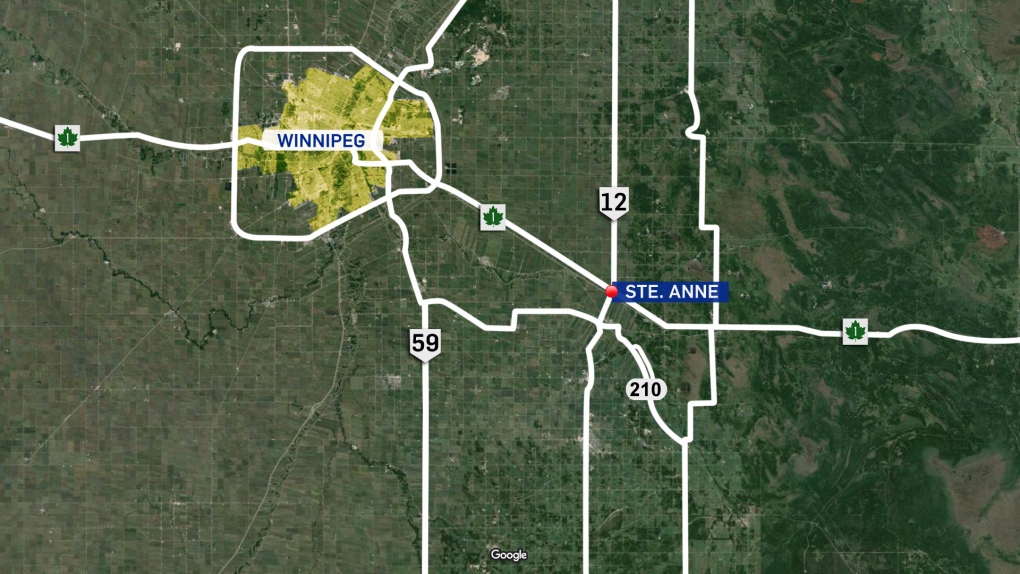This Manitoba community has nearly doubled in a decade. What's behind the population boom?
Riding his bike through Saint Anne, Man., lifelong resident Cliff Blair hardly recognizes the town.
"I noticed how big it was, and it was like – holy," Blair said. "That shocked me a little bit. It's like double the size."
According to population data and estimates from Statistics Canada, Ste. Anne has nearly doubled in the past decade – from 1,832 residents in 2013 to more than 3,300 residents as of 2023.
Booming by 81 per cent over the decade, Ste. Anne saw the highest percentage growth in the province followed by Niverville (64 per cent) and West. St. Paul (61 per cent).

"The growth rate has maybe even caught us by surprise as far as how quickly it's gone," said Ste. Anne Mayor Yvan St. Vincent.
He said for a long time there was little to no growth in the community. But that all changed about 10 years ago.
"We saw a lot of bedroom communities like Oak Bank and Niverville and places like the Saint Adolph. We saw them boom and grow. And the council at that time 10 years ago, thought, 'You know? It's our turn.'"
And grow they have – but how did they do it?
St. Vincent said the council first focused on giving new residents a place to live by selling developers on the town's location – a bedroom community less than an hour outside Winnipeg.

"We started trying to tap into that. We're close to Winnipeg and a little quieter, a little safer, but still not too far away from anything that you really need," he said.
It's attracted around six major developments to the area, transforming once-empty fields into new neighbourhoods filled with hundreds of new residents. It's got to the point where Ste. Anne is pushing up against its boundaries with the surrounding rural municipality.
"If we want to continue to grow, then we're going to need to get some more land for the town," St. Vincent said, adding the town is working with the neighbouring RM to acquire more land through annexation.
Infrastructure costs threatens boom
But that growth comes with its own challenges.
"New residents and new homes are great, but (they) also now need new resources," St. Vincent said. "The problem with our growth is keeping up with the infrastructure."
The Federation of Canadian Municipalities estimates one housing unit can cost a municipality around $107,000 in investments.
- Part 1: Inside a Manitoba ghost town, a group of ladies works to keep it alive
- Part 2: 'Low property taxes, friendly neighbours': How some Manitoba communities are selling small-town living
"In some instances, this growth is stopped because there is not enough money put into infrastructure," said Denys Volkov, executive director of the Association of Manitoba Municipalities.
He said most municipalities' main income is property taxes. When faced with costly infrastructure upgrades required to support growth, they can either raise taxes or look to governments for help.
"They alone often cannot afford upgrades to infrastructure, so municipalities would like to work closely with provincial and federal governments to build infrastructure."
A prime example of this in Ste. Anne is the town's school.
 The mayor of Ste. Anne says the town's school busting at the seams. The school is pictured in September 2024. (Source: Danton Unger/CTV News Winnipeg)
The mayor of Ste. Anne says the town's school busting at the seams. The school is pictured in September 2024. (Source: Danton Unger/CTV News Winnipeg)
St. Vincent said the town was promised a new school by the former PC government, but that has been put on pause by the new NDP government.
"We're really advocating daily for the new school to be built because the school that we have is busting at the seams because of our growth," he said.
In a statement to CTV News, Manitoba Education Minister Nello Altomare said his office has met with the Seine River School Division.
"We are reviewing space utilization data from all school divisions to inform the 2025/26 capital plan," Altomare said. "St. Anne’s school will be considered as part of that review."
'It is part of our roots'
The mayor said council is now focused on bringing new employment opportunities to Ste. Anne – like a new Co-op grocery store currently being built – so its growing population can live and work in the community.
But St. Vincent says there is still a balancing act involved.
"Still kind of offering that small town feel, small town service, but just having a few more amenities."
He said part of that includes respecting and honouring Ste. Anne's heritage.
"This was largely a Francophone community years ago," he said. "We do all we can to make sure that we respect and uphold that culture, because it is part of our roots."
Even with all the growth, Blair said he's sure Ste. Anne will stay true to its small-town charm – a place where everyone is ready to give a wave with a friendly 'bonjour'.
"That's Ste. Anne in a nutshell," he said, waving a greeting to someone walking past him.
CTVNews.ca Top Stories

Bird flu, measles top 2025 concerns for Canada's chief public health officer
As we enter 2025, Dr. Theresa Tam has her eye on H5N1 bird flu, an emerging virus that had its first human case in Canada this year.
DEVELOPING Body found in wheel well of plane at Maui airport
A person was found dead in the wheel well of a United Airlines flight to Maui on Tuesday.
Ottawa police identify victim of Christmas Day homicide in Hintonburg, charge suspect
The Ottawa Police Service says the victim who has been killed on Christmas Day in Hintonburg has been identified.
Christmas shooting at Phoenix airport leaves 3 people wounded
Police are investigating a Christmas shooting at Sky Harbor Airport in Phoenix that left three people injured by gunfire.
Your kid is spending too much time on their phone. Here's what to do about it
Wondering what your teen is up to when you're not around? They are likely on YouTube, TikTok, Instagram or Snapchat, according to a new report.
Plush toys recalled due to choking hazard
Health Canada announced a recall on a series of plush toys due to a choking hazard. Anyone who has purchased an elephant, giraffe, lion, tiger and/or panda plush toy with an attached baby can return them to the place of purchase for a refund.
6,000 inmates stage Christmas Day escape from high-security Mozambique prison
At least 6,000 inmates escaped from a high-security prison in Mozambique's capital on Christmas Day after a rebellion, the country's police chief said, as widespread post-election riots and violence continue to engulf the country.
Azerbaijan observes day of mourning for air crash victims as speculation mount about its cause
Azerbaijan on Thursday observed a nationwide day of mourning for the victims of the plane crash that killed 38 people and left all 29 survivors injured as speculation mounted about a possible cause of the disaster, with some experts saying that the airliner was damaged by Russian air defence fire.
Bird flu kills more than half the big cats at a Washington sanctuary
Bird flu has been on the rise in Washington state and one sanctuary was hit hard: 20 big cats – more than half of the facility’s population – died over the course of weeks.
































